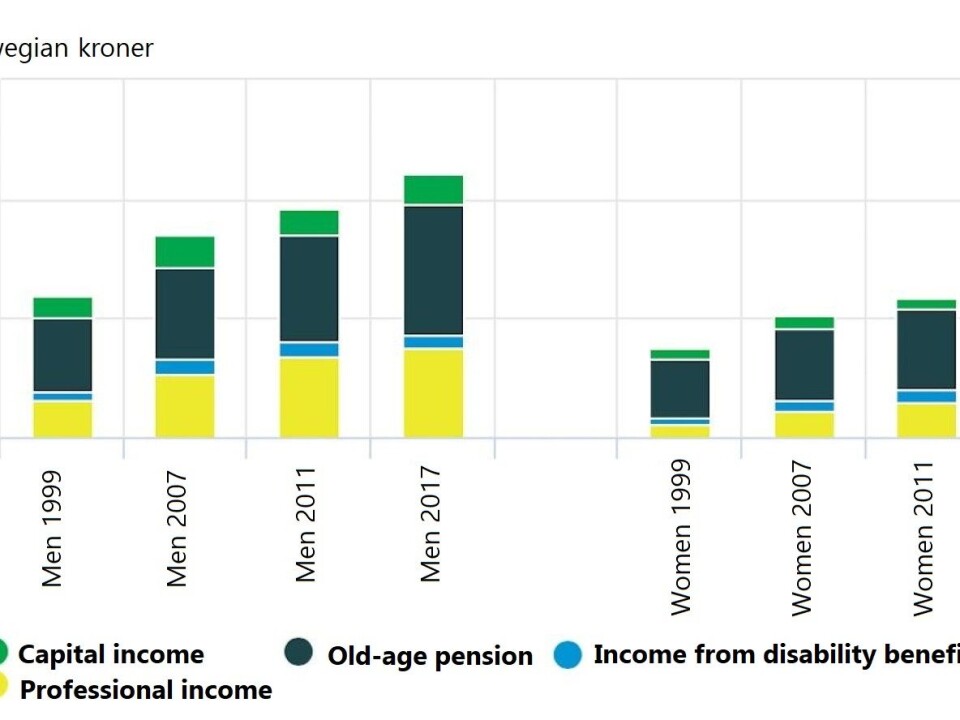
Older Norwegians have almost doubled income in 20 years
Women and people with the lowest incomes have experienced strong income growth in Norway over the last 20 years. But wealthier older people have had the strongest increase during that period.
In 2017, the average Norwegian over the age of 62 had a total income that was more than 1.8 times higher than he and she had in 1999, new figures from Statistics Norway show.
Even with the weak increase in the county’s old-age pension since 2011, Norway’s elderly have thus seen strong growth in their in overall income.
Both genders work more
Older people now work a good deal more than they did in the past.
This increase in employment income is what has contributed most to older Norwegians having more income overall. Other sources of income for the elderly are old-age pensions, contractual early retirement schemes, disability insurance and capital income.

Both older women and men work more than before and thus earn more.
At the same time, older women still receive a significantly greater share of their income from social security schemes — such as disability benefits — than men do. Men, for their part, have more capital income than women.
Combining retirement and work
Norway’s pension reform in 2011 allowed a majority of the elderly, from the age of 62, to combine income from work with their old-age pension from the National Insurance Scheme.
This has led to many elderly people — especially men — choosing to take early retirement, even though in the long run this leads to a reduced retirement pension.
Thus, the number of old-age pensioners has increased by as much as 38 per cent from 2011 to 2017.
Statistics Norway’s new numbers show how the total income for older Norwegians has increased over the years.
Earns 1.5 times more
Although older women have had a higher percentage growth in income than men, they still earn significantly less than men.
In 2017, men who were 62 or older had an average income of NOK 526,000.
This is more than 1.5 times higher than what older women earned on average. The large income gap between today’s older women and men is largely due to the fact that women spent more time working part-time jobs during their working lives.
On the other hand, the Norwegian tax system helps to balance differences between those who earn more and those who earn less. Men who were 62 or older in 2017 were left with an average of NOK 397,000 in after-tax income, while women were left with NOK 276,000. This means that men's after-tax income was 1.44 times higher than women's income.
------------------------------
Read the Norwegian version of this article at forskning.no
































